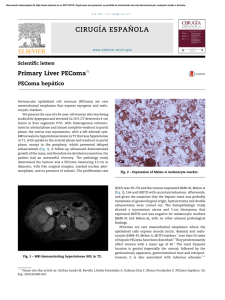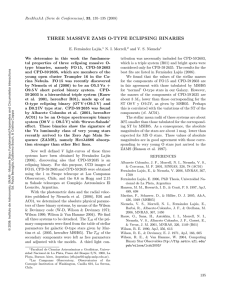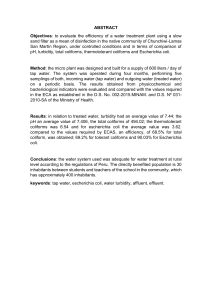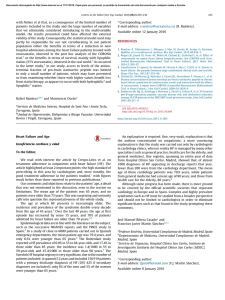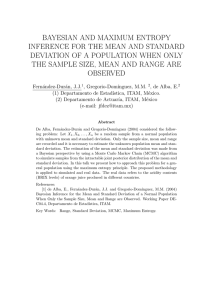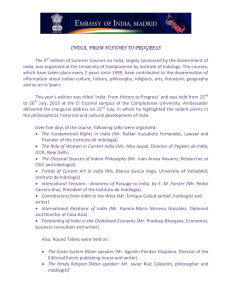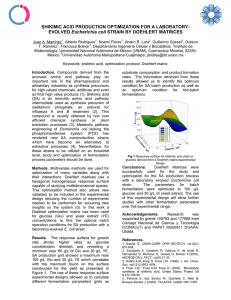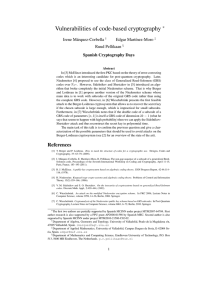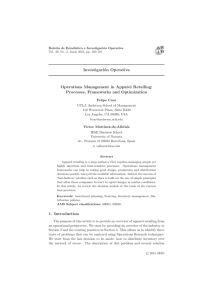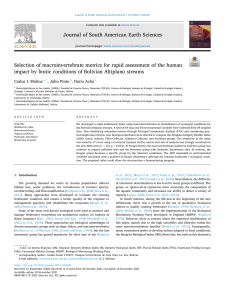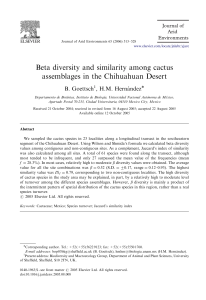dye (arc) mutants: insights into an unexplained phenotype and its
Anuncio
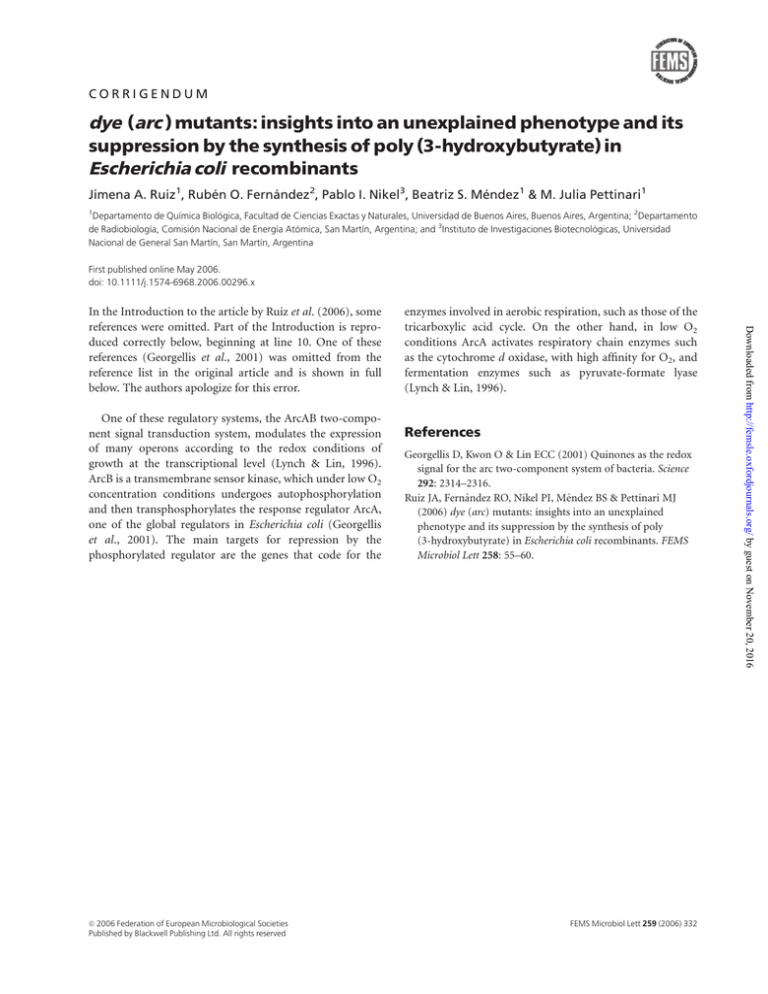
CORRIGENDUM dye (arc ) mutants: insights into an unexplained phenotype and its suppression by the synthesis of poly (3-hydroxybutyrate) in Escherichia coli recombinants Jimena A. Ruiz1, Rubén O. Fernández2, Pablo I. Nikel3, Beatriz S. Méndez1 & M. Julia Pettinari1 1 Departamento de Quı́mica Biológica, Facultad de Ciencias Exactas y Naturales, Universidad de Buenos Aires, Buenos Aires, Argentina; 2Departamento de Radiobiologı́a, Comisión Nacional de Energı́a Atómica, San Martı́n, Argentina; and 3Instituto de Investigaciones Biotecnológicas, Universidad Nacional de General San Martı́n, San Martı́n, Argentina First published online May 2006. doi: 10.1111/j.1574-6968.2006.00296.x One of these regulatory systems, the ArcAB two-component signal transduction system, modulates the expression of many operons according to the redox conditions of growth at the transcriptional level (Lynch & Lin, 1996). ArcB is a transmembrane sensor kinase, which under low O2 concentration conditions undergoes autophosphorylation and then transphosphorylates the response regulator ArcA, one of the global regulators in Escherichia coli (Georgellis et al., 2001). The main targets for repression by the phosphorylated regulator are the genes that code for the 2006 Federation of European Microbiological Societies Published by Blackwell Publishing Ltd. All rights reserved c enzymes involved in aerobic respiration, such as those of the tricarboxylic acid cycle. On the other hand, in low O2 conditions ArcA activates respiratory chain enzymes such as the cytochrome d oxidase, with high affinity for O2, and fermentation enzymes such as pyruvate-formate lyase (Lynch & Lin, 1996). References Georgellis D, Kwon O & Lin ECC (2001) Quinones as the redox signal for the arc two-component system of bacteria. Science 292: 2314–2316. Ruiz JA, Fernández RO, Nikel PI, Méndez BS & Pettinari MJ (2006) dye (arc) mutants: insights into an unexplained phenotype and its suppression by the synthesis of poly (3-hydroxybutyrate) in Escherichia coli recombinants. FEMS Microbiol Lett 258: 55–60. FEMS Microbiol Lett 259 (2006) 332 Downloaded from http://femsle.oxfordjournals.org/ by guest on November 20, 2016 In the Introduction to the article by Ruiz et al. (2006), some references were omitted. Part of the Introduction is reproduced correctly below, beginning at line 10. One of these references (Georgellis et al., 2001) was omitted from the reference list in the original article and is shown in full below. The authors apologize for this error.
